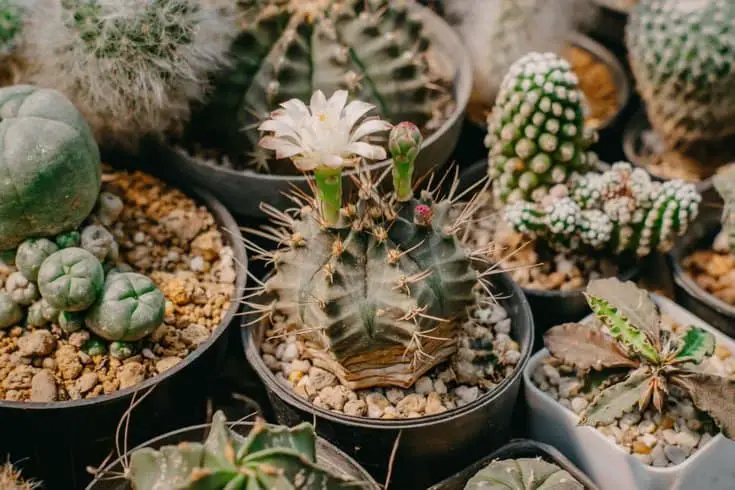Why I Trim My Catnip—and Why You Probably Should Too

Ah, catnip. That leafy little rebel in the garden. One minute, it’s a gentle herb minding its own business. Next thing you know, it’s sprawling out like it owns the joint, summoning neighborhood cats like it’s throwing an open-bar party.
I’ve learned the hard way that if you don’t give catnip some tough love with a good trim now and then, it’ll run wild. But trimming isn’t just about keeping things tidy. It’s about guiding your catnip to be the best version of itself—full of blooms, health, and purpose.
Let’s talk about why I make trimming catnip a ritual in my garden life—and why you might want to grab those pruning shears too.
Understanding Catnip Growth
Catnip thrives in full sun and well-drained soil, making it a low-maintenance herb for most gardeners. It prefers slightly sandy or loamy soil with moderate watering. While it’s a hardy perennial in many climates, catnip can become leggy and less fragrant without proper care.
Common issues include overcrowding, pest attacks from aphids or spider mites, and powdery mildew in humid conditions. If your catnip starts looking floppy or sparse, it’s often a sign it needs a trim or better airflow.
Here’s a simple breakdown of its growth stages:
| Stage | What Happens | Best Time to Prune |
| Seedling | Small sprouts develop | Wait until 6 inches tall |
| Early vegetative | Leaves thicken, stems grow upward | Light trim to encourage bushiness |
| Mid-season growth | Rapid leaf and branch production | Regular pruning every few weeks |
| Flowering | Small blooms appear, flavor decreases | Trim before flowers form |
Pruning at the right stage keeps your catnip lush, full, and more potent.
Why I Trim My Catnip
1. To Keep It Healthy: Sometimes You’ve Gotta Be Cruel to Be Kind
Let’s start with the obvious—plant health. Catnip may seem tough, but it’s no superhero. Like any perennial, it has its kryptonite. Powdery mildew, for instance, loves to sneak in and wreak havoc, especially in the thick of summer.
When I spot signs of disease, I don’t hesitate. I give it a hard backcut—yes, even if it looks a little sad afterward. That aggressive snip sends a clear message to the plant: “Hey, it’s time to bounce back.”
Removing those infected flower heads allows the plant to redirect its energy. It stops trying to look pretty and starts fighting back. Think of it like switching from evening wear to battle armor.
2. To Keep the Flowers Coming: Don’t Let It Peak Too Early

Catnip’s blooms are a showstopper, but they tend to be a one-hit wonder unless you step in. After that first glorious flush of flowers, things start to fizzle—unless you cut it back at just the right time.
Here’s my method:
| Flowering Stage | What I Do | Why It Works |
| After First Bloom | Cut to first leaf or lower | Stimulates new growth and flowers |
| Mid-Summer | Trim faded flower heads | Extends blooming into early fall |
| Late Summer | Light prune if needed | Keeps the plant looking fresh |
Once I get in there with my shears, new buds usually pop up within a couple of weeks. It’s like giving catnip a second wind. Plus, it puts a stop to unwanted self-seeding—because trust me, you don’t want surprise catnip popping up in your lettuce bed.
3. To Keep It from Taking Over: Curb That Wanderlust
Catnip has wanderlust. Left unchecked, it’ll spread faster than gossip in a small town. One day it’s politely tucked in the corner; the next, it’s creeping over your thyme, crowding out your basil, and edging toward world domination.
I do a serious cut-back in late winter or early spring—usually sometime between February and March, as long as the ground isn’t frozen. I go all the way down to the ground, using clean, sharp shears. No mercy.
This springtime trim resets the plant’s urge to sprawl. It’s like hitting the reset button—kind of like when you finally clean out your junk drawer and rediscover space you forgot existed.
⚠️ Note: Avoid trimming in autumn unless you’re just removing faded blooms. The stalks help protect the root system during winter, especially in snowy or wet climates.
4. For the Herbs and Healing: A Little Snip Goes a Long Way
Did you know catnip isn’t just a playground for felines? I use it in the kitchen and sometimes even in herbal remedies. It’s part of my “green medicine cabinet.”
Here are a few ways I put it to use:
| Part Used | Harvest Time | Use |
| Leaves & stems | Summer | Dry for tea or smoke blends |
| Individual flowers | Summer | Garnish desserts and salads |
I’ll snip off a few stems, dry them out, and brew a calming tea on days when my brain feels like it’s spinning its wheels. And those delicate flowers? They’re the edible confetti I toss over fruit salads when I want to impress guests with zero effort.
5. For Propagation: Snip, Root, Repeat
Want more catnip without spending a dime? Cuttings are your best friend. I’ve multiplied my plant family this way, and it’s incredibly satisfying.
Here’s how I do it:
- Choose healthy stems – ideally in April to June.
- Cut a 4–6-inch piece just below a node.
- Remove the lowest leaves.
- Place the cutting in a glass of water—sunny windowsill preferred.
- Wait for roots to show up like tiny white threads (about 1–2 weeks).
- Plant in soil once the roots are an inch or so long.
Boom. New catnip. It’s like botanical cloning without the sci-fi drama.
| Check out: Pruning Chinese Lantern Plants: How to Trim and Care Guide |
6. To Temporarily Deter the Neighborhood Cats
Let’s talk cats—literal ones. I adore cats, but when every feline in a five-block radius starts hosting daily yoga sessions in my herb patch, we’ve got a problem.
Radical pruning helps.
When I’ve had enough of their napping and nibbling, I’ll cut the catnip back hard. It gives me time to plan a more permanent solution—like chicken wire barriers or repotting it somewhere less accessible.
Final Tips and Tricks from the Garden Bench
Here’s my cheat sheet for keeping catnip manageable, beautiful, and useful:
- Use sharp shears. Dull blades tear stems and invite disease.
- Don’t over-prune. A little stress helps the plant, but overdoing it weakens it.
- Dry catnip in bunches. Hang upside down in a cool, dark space.
- Keep a cat-safe zone. If you want to share with your feline friend, dedicate a corner just for them—and protect the rest.
In Bloom and In Balance
Trimming catnip isn’t just a chore—it’s a conversation. When I prune, I’m telling the plant what I need: more flowers, less chaos, and maybe a little herbal joy on the side.
In return, catnip gives back—bursting with color, scent, and utility. It’s a dance, really. One that’s equal parts discipline and delight.
So grab your shears, take a deep breath, and dive in. Your catnip (and maybe your cat) will thank you.






